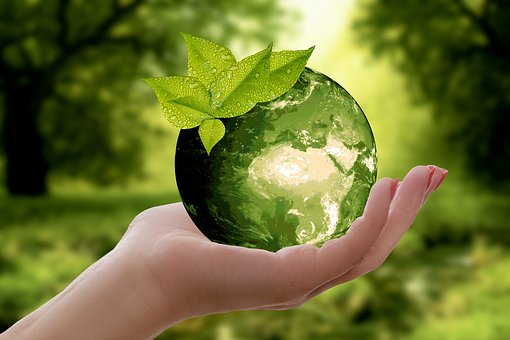Dailycsr.com – 27 August 2018 – This year, the “Sustainability and Circular Economy Summit” dealt with “Translating Value to Ignite Action”. The summit took place in July 2018 as the US Chamber of Commerce Foundation organised it for exploring effective implementation of “sustainability strategies for businesses” along with their economic output.
Across the globe, there is a growing trend as markets and communities that hit the bottom in past decades are seen rising to the “middle class” level. With the increased wealth comes “increased consumption”. However, the economic growth is taking place at a time when the plant resources are “strained” to keep up with the current consumption levels. It is estimated that by 2050, the global population will touch 9 billion, while “large-scale circular economy strategies” could be helpful in mitigating the footprints generated by humanity in its extraction of the earth’s “finite resources”.
Among the “robust spectrum” offered by the summit, here are three “compelling and consistent themes”. The first of which is “Begin with the end in mind”.
One needs to bear in mind that circular economy isn’t that circular after all, while the lifespan of a product in only enhanced through reusing “recycling, or repurposing”. Therefore, there is an inevitable “waste byproducts”. Therefore it is important to consider the “end of life” of a product during its early design stage. According to PYXERA Global”
“There are transformational initiatives to create products out of waste. Adidas, for example, sold 1 million pairs of sneakers made from ocean waste in 2017 and is now introducing a line of recycled clothing and taking steps to become even more sustainable”.
While, the American Chemistry Council’s “Director of Plastics Packaging and Consumer Products”, Emily Tipaldo stated:
“We need to think more about the end of life of materials in the front end of design”.
In fact, this way one becomes more informed about the final destination of a product in its “traditional lifecycle”.
The second, however, could be summed up with “It’s complicated”, as the waste generation seem to grow everyday imposing a growing threat which could potentially exhaust the “regenerative capacity of the Earth’s ecosystems”, one could turn to “easy fixes”. As a result, we see various initiatives like attempting to “get rid of all plastics” or “recycle everything”.
Nevertheless, there are complex, environment which pose challenge to the initiative which requires “strategic solutions grounded in a systems approach”, as Tipaldo pointed out:
“We need to be mindful not to throw the baby out with the bathwater. It is important to understand the implications of various types of waste management, rather than saying something is universally good or bad”.
“With the growing amount of waste threatening the regenerative capacity of the Earth’s ecosystems, it is natural human instinct to respond with easy fixes, such as a call to 'get rid of all plastics' or 'recycle everything.' Complex environmental and social challenges, however, often require strategic solutions grounded in a systems approach.”
The third among them is “Educate Your Counterparts Continually”, as the “Global Manager for Packaging Sustainability and Circular Economy at Anheuser-Busch”, Jennifer Ballen shared:
“Things are changing. Use data to break long held myths about the value of sustainability in marketing, for example. We’re seeing more integration.”
For more information, kindly visit:
https://www.pyxeraglobal.org/translating-value-ignite-action/
References:
3blmedia.com
Across the globe, there is a growing trend as markets and communities that hit the bottom in past decades are seen rising to the “middle class” level. With the increased wealth comes “increased consumption”. However, the economic growth is taking place at a time when the plant resources are “strained” to keep up with the current consumption levels. It is estimated that by 2050, the global population will touch 9 billion, while “large-scale circular economy strategies” could be helpful in mitigating the footprints generated by humanity in its extraction of the earth’s “finite resources”.
Among the “robust spectrum” offered by the summit, here are three “compelling and consistent themes”. The first of which is “Begin with the end in mind”.
One needs to bear in mind that circular economy isn’t that circular after all, while the lifespan of a product in only enhanced through reusing “recycling, or repurposing”. Therefore, there is an inevitable “waste byproducts”. Therefore it is important to consider the “end of life” of a product during its early design stage. According to PYXERA Global”
“There are transformational initiatives to create products out of waste. Adidas, for example, sold 1 million pairs of sneakers made from ocean waste in 2017 and is now introducing a line of recycled clothing and taking steps to become even more sustainable”.
While, the American Chemistry Council’s “Director of Plastics Packaging and Consumer Products”, Emily Tipaldo stated:
“We need to think more about the end of life of materials in the front end of design”.
In fact, this way one becomes more informed about the final destination of a product in its “traditional lifecycle”.
The second, however, could be summed up with “It’s complicated”, as the waste generation seem to grow everyday imposing a growing threat which could potentially exhaust the “regenerative capacity of the Earth’s ecosystems”, one could turn to “easy fixes”. As a result, we see various initiatives like attempting to “get rid of all plastics” or “recycle everything”.
Nevertheless, there are complex, environment which pose challenge to the initiative which requires “strategic solutions grounded in a systems approach”, as Tipaldo pointed out:
“We need to be mindful not to throw the baby out with the bathwater. It is important to understand the implications of various types of waste management, rather than saying something is universally good or bad”.
“With the growing amount of waste threatening the regenerative capacity of the Earth’s ecosystems, it is natural human instinct to respond with easy fixes, such as a call to 'get rid of all plastics' or 'recycle everything.' Complex environmental and social challenges, however, often require strategic solutions grounded in a systems approach.”
The third among them is “Educate Your Counterparts Continually”, as the “Global Manager for Packaging Sustainability and Circular Economy at Anheuser-Busch”, Jennifer Ballen shared:
“Things are changing. Use data to break long held myths about the value of sustainability in marketing, for example. We’re seeing more integration.”
For more information, kindly visit:
https://www.pyxeraglobal.org/translating-value-ignite-action/
References:
3blmedia.com


 Looking For ‘Strategic Solutions Grounded In A Systems Approach’
Looking For ‘Strategic Solutions Grounded In A Systems Approach’





 Companies
Companies